What is a Risk Assessment in Occupational Health and Safety (OHS)
in the Workplace.
The core principles associated with a risk assessment process in addition with the legal requirements of why organisations go through this important task, is common territory to seasoned health and safety professionals and larger organisations.
However, there are numerous smaller organisations that may not fully grans that they have a responsibility to ensure the health and safety of all employees and visitors, and that they must drive compliance relating to health and safety within the operations of the organisation.
The Occupational Health and Safety Act, 85 of 1993 requires that each employer provide a workplace which is safe and without risk to the health of employees, with further guidance offered on how employers can achieve this.
Risk assessment in Occupational Health and Safety involves the fundamentals which are ingrained in the Act to assist employers in achieving their duties towards the health and safety of employees, and any other persons who may be affected by the organisation’s activities.
COVID-Blogs
SafetyWallet's Blog and Articles about Health and Safety compliance and other related topics.
OHS Risk Assessment
As per the Amended Occupational Health and Safety Act, Section 29, an inspector may, without any prior notice, enter any premises occupied and used by an employer to perform work. In addition, the inspector may also request documentation relating to the health and the safety of an organisation, including the OHS Risk Assessment plan.
Health and Safety Risk Assessment Steps
Health and Safety Risk Assessment Steps
Overview
Employers have an obligation to ensure and maintain a healthy and safe work environment for employees and visitors to the premises. This is to ensure that employees are safeguarded and to ensure that employers are compliant with the Occupational Health and Safety Act, 85 of 1993.
There may be a misconception that health and safety risk assessments are complex, time-consuming, or tedious, however, there are five simple health and safety risk assessment steps that can be followed to ensure that an effective risk assessment is done.
OHS Risk Assessment in the workplace
SafetyWallet explains how employers can carry out a Health and Safety Risk Assessment in the workplace.
Health and Safety Risk Assessment Meaning
It is the employer’s legal obligation to ensure that employees are protected from occupational risks to which they could be exposed. This can be done by implementing and following a risk management process, which involves:
Risk analysis
Risk assessment and risk control practices.
A Health and Safety Risk Assessment Should Include 5 Steps
A Health and Safety Risk Assessment Should Include 5 Steps
The simplest definition of a Risk Assessment is that it is a careful examination of what, in the workplace, could cause harm to people, so that employers can weigh up whether they have taken enough precautions, or whether more should be done to prevent harm.
It forms a crucial part for OHS management and the main objective that it has is to determine the measures needed to comply with the OHS Act, 85 of 1993, and all other regulations and legislation, to reduce the level of incidents and/or accidents.
Why must a Risk Assessment be carried out?
It can help the employer comply with their legal duty and it helps them protect their employees and their business.
There may be confusion as to when a risk assessment must be conducted, and employers may complicate the entire procedure by thinking that it is a complex and difficult procedure. It can be conducted at any time, and it should be conducted before employees conduct a task, start work for the day, or do work that presents a significant chance of injury or ill-health.
Employers are legally allowed to appoint a competent person to conduct a risk assessment on their behalf. However, the competent person must possess the right qualification to do so in addition to the necessary skills, training, knowledge, and experience, for instance an OHS Manager or officer.
Health and Safety Risk Assessment Methodology
Health and Safety Risk Assessment Methodology
Overview
Employees must be safeguarded form Occupational Health and Safety risks that they may be exposed to in the workplace. This can be achieved through risk management processes that involves risk analysis, risk assessment, and effective risk control practices.
TO carry out an effective risk management process, it is crucial to understand the legal context, concepts, risk analysis, and health and safety risk assessment methodology, and control processes, along with the roles played by all involved.
Health and Safety Risk Assessment for Working from Home
The past year, with the emergence and spread of SARS-CoV-2, the classification of it as a pandemic, and the subsequent lockdown and quarantine regulations that followed to curb the spread of the virus, has changed the way in which a lot of businesses operate.
Employees were forced to work remotely, where possible, for long durations of time and it became imperative to include health and safety risk assessments for working from home, as the home environment, much like any other, also presents its own unique hazards and risks.
Types of Health and Safety Risk Assessment Methods
The types of health and safety risk assessment methods depend on the type of assessment that is being carried out. There are three main types that can be identified, which will be discussed in the article in detail, they are:
Baseline Risk Assessment
Issue-Based Risk Assessment
Continuous Risk Assessment

-What-is-a-Risk-Assessment-in-Occupational-Health-and-Safety-Banner-1.jpg)


-OHS-Risk-Assessment-Banner-1.jpg)


-Health-and-Safety-Risk-Assessment-Steps-Banner-1.jpg)


-How-you-would-carry-out-a-Health-and-Safety-Risk-Assessment-in-your-workplace-Banner-1.jpg)


-Health-and-Safety-Risk-Assessment-Meaning-Banner-1.jpg)


-A-Health-and-Safety-Risk-Assessment-Should-Include-5-Steps-Banner-1.jpg)


-Health-and-Safety-Risk-Assessment-Methodology-Banner-1.jpg)
-Health-and-Safety-Risk-Assessment-for-Working-from-Home-Banner-1.jpg)


-Types-of-Health-and-Safety-Risk-Assessment-Methods-Banner-1.jpg)